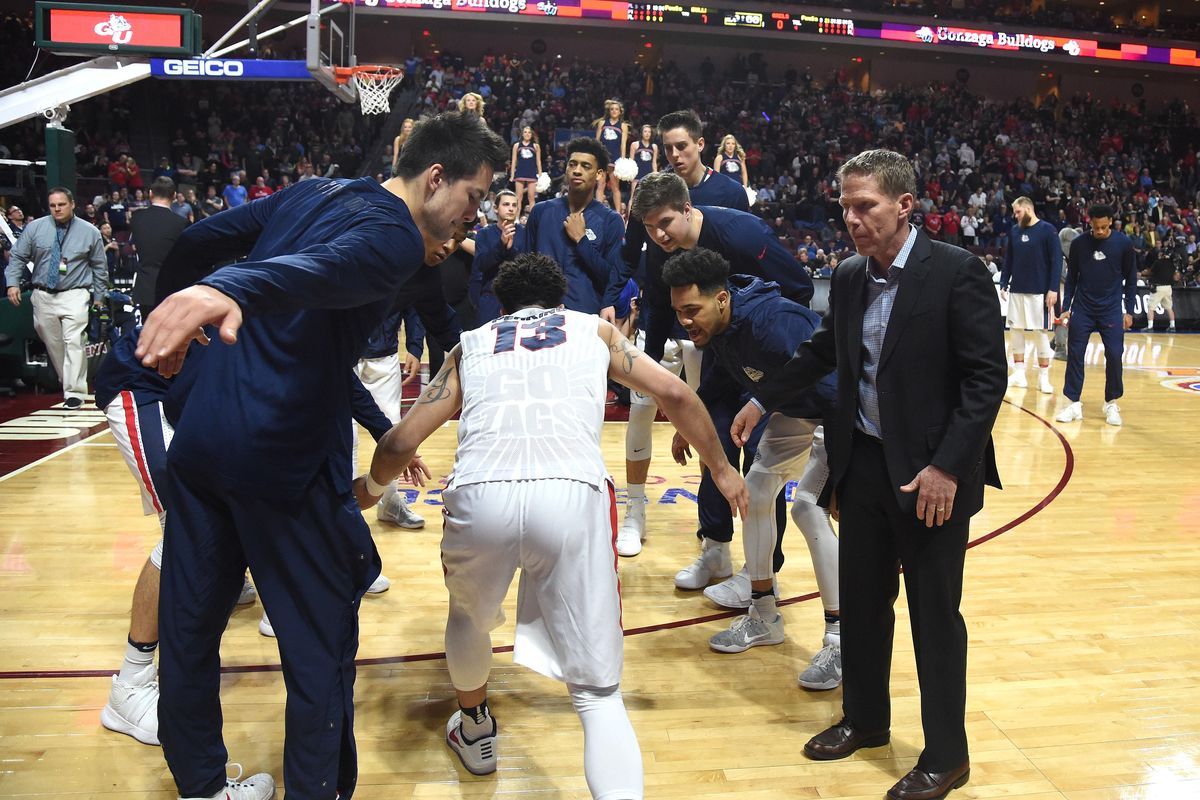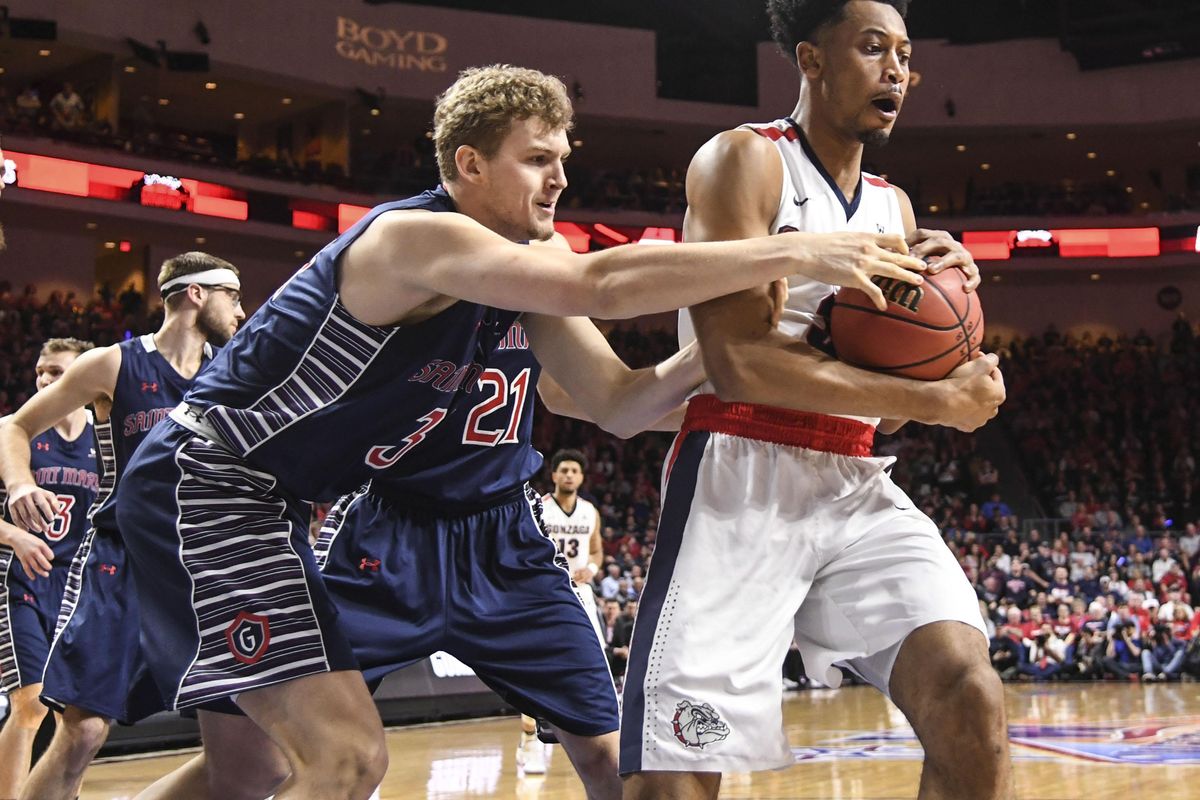TV Take: Multiple factors add up to one great Gonzaga team
Gonzaga guard Josh Perkins (13) is introduced before the WCC title game with Saint Mary's during the first half of a WCC title game, Tues., March 7, 2017, at Orleans Arena in Las Vegas. (Colin Mulvany / The Spokesman-Review)
As Gonzaga completed its seemingly inevitable march to the NCAA Tournament for a 19th consecutive year, there became one unanswerable question.
No, not is this Mark Few’s best team. Nor the ones about and No. 1 seed or the importance of making the Final Four.
Those questions will be answered over the next few weeks.
The one we are talking about, and the ESPN folks tried to put a finger on it during fourth-ranked GU’s 74-56 West Coast Conference championship game win over Saint Mary’s, is more esoteric.
Why is this team so good?
A simple question with about 61.2 answers.
If you asked Dick Vitale after the weekend, he may point to Nigel Williams-Goss, the WCC’s most valuable player and Tuesday night’s leader as the Zags held off Saint Mary’s spirited second-half comeback.
It was Williams-Goss’ three-point play with 5 minutes, 19 seconds left that gave Gonzaga a 62-48 edge and killed any hope the Gaels had exhumed after a 39-18 GU halftime lead.
Williams-Goss floater, and-1
Vitale, the long-time voice of ESPN’s college basketball coverage, gushed over Williams-Goss’ floor generalship.
He wondered how much he was missed at Washington as Williams-Goss was scoring 22 points, handing out six assists and grabbing six rebounds.
And he said this about the junior point guard: “The key to the engine that makes (Gonzaga) go is right there, No. 5, Williams-Goss.”
Then again, Vitale seemed immensely impressed with Gonzaga’s immense center, Przemek Karnowski, who had 15 points and 10 rebounds.
And he said, “This kid is going to be a star, baby. He’s got S-T-A-R written all over him,” to describe 7-foot freshman Zach Collins.
But Vitale being Vitale, he may also agree with in-studio analyst Seth Greenberg’s assessment at halftime.
“This team is elite defensively,” Greenberg said after the Bulldogs had limited 19th-ranked Saint Mary’s to 21.4-percent shooting and forced 10 turnovers. “This is a different Gonzaga because of what they can do defensively.”
“People don’t realize how good a defensive team they are,” Vitale said in the first half, a sentiment he echoed in the second while pointing out they give up only 61.2 points per game.
Speaking of echoes, Williams-Goss shared similar sentiments during his postgame interview with the folks in Bristol, Connecticut.
“We need to defend and rebound at a high level,” he answered when asked what the 32-1 Zags need to do to be successful in the NCAAs. “Our offense will take care of itself … we have a lot of playmakers. As long as we get stops and are rebounding, that will carry us a long way in the tournament.”
And how does that manifest itself?
Sometimes in simple ways. Like what happened in the final 22 seconds of the first half.
The Zags led 37-18, but Saint Mary’s had an inbounds play under its basket with a chance to score and build momentum for the last 20 minutes. A 3-pointer was coming, right?
That must have been what Mark Few thought because Gonzaga defended the inbounds play atypically.
The Zags usually put their power forward, in this case Johnathan Williams, on the ball no matter who brings it in, using the 6-9 Williams’ length to disrupt set plays.
But this time Few had Williams-Goss guard the inbounder, guard Joe Rahon.
When Rahon tossed the ball to center Jock Landale in the left corner and raced to the wing, he was probably there to attack Williams in space.
But there was no space.
Instead of the 6-9 Williams, who is more comfortable inside, there was the 6-3 Williams-Goss, denying Rahon the ball no matter how far he stretched away from the basket.
With Karnowski pressuring Landale 18 feet from the hoop, the Saint Mary’s center passed the ball to Williams-Goss. Five seconds later he had scored on the other end and was fouled. The three-point play put a cap on, as Vitale called it, “an A-plus half” for Gonzaga.
And showed there may not be any one overarching answer for how this GU team got so good.
Williams-Goss steal and basket




















































